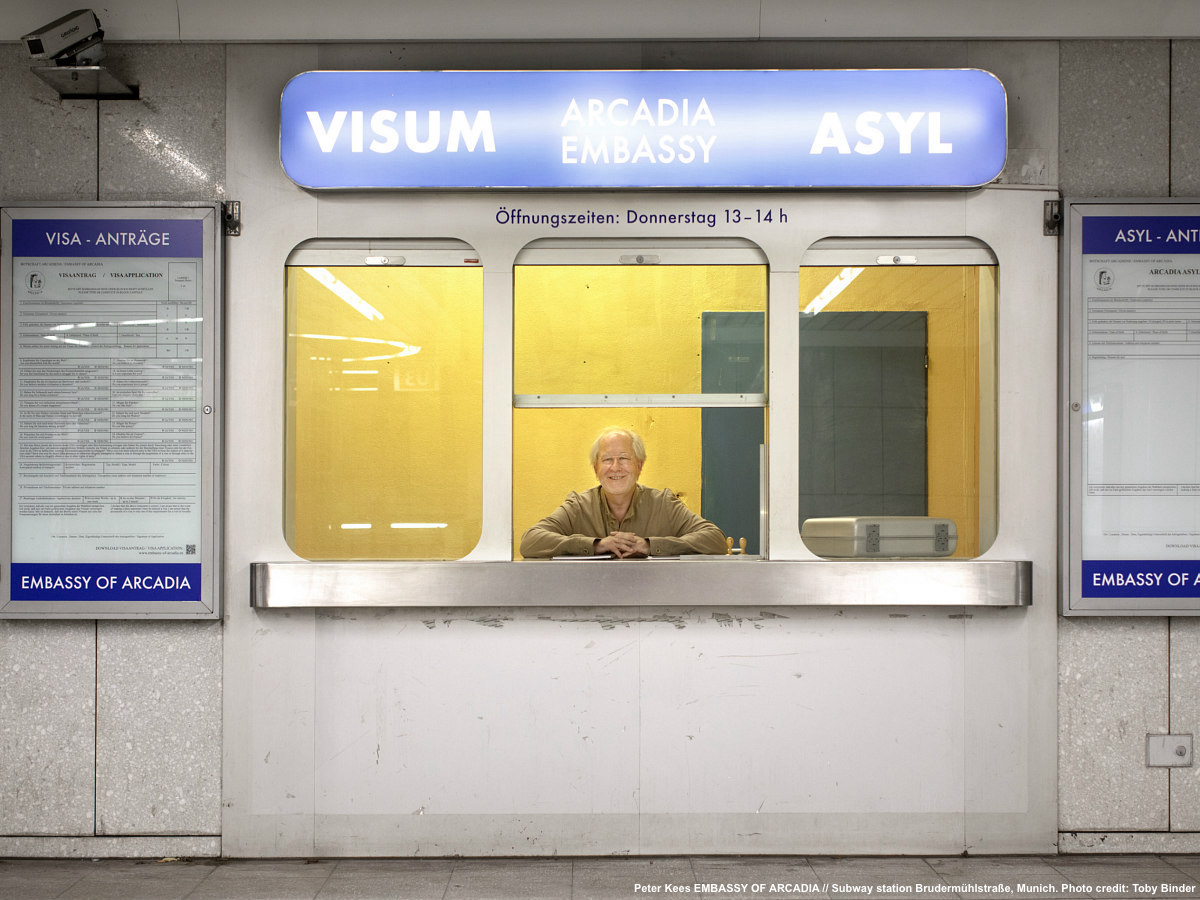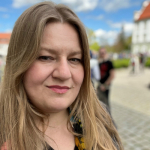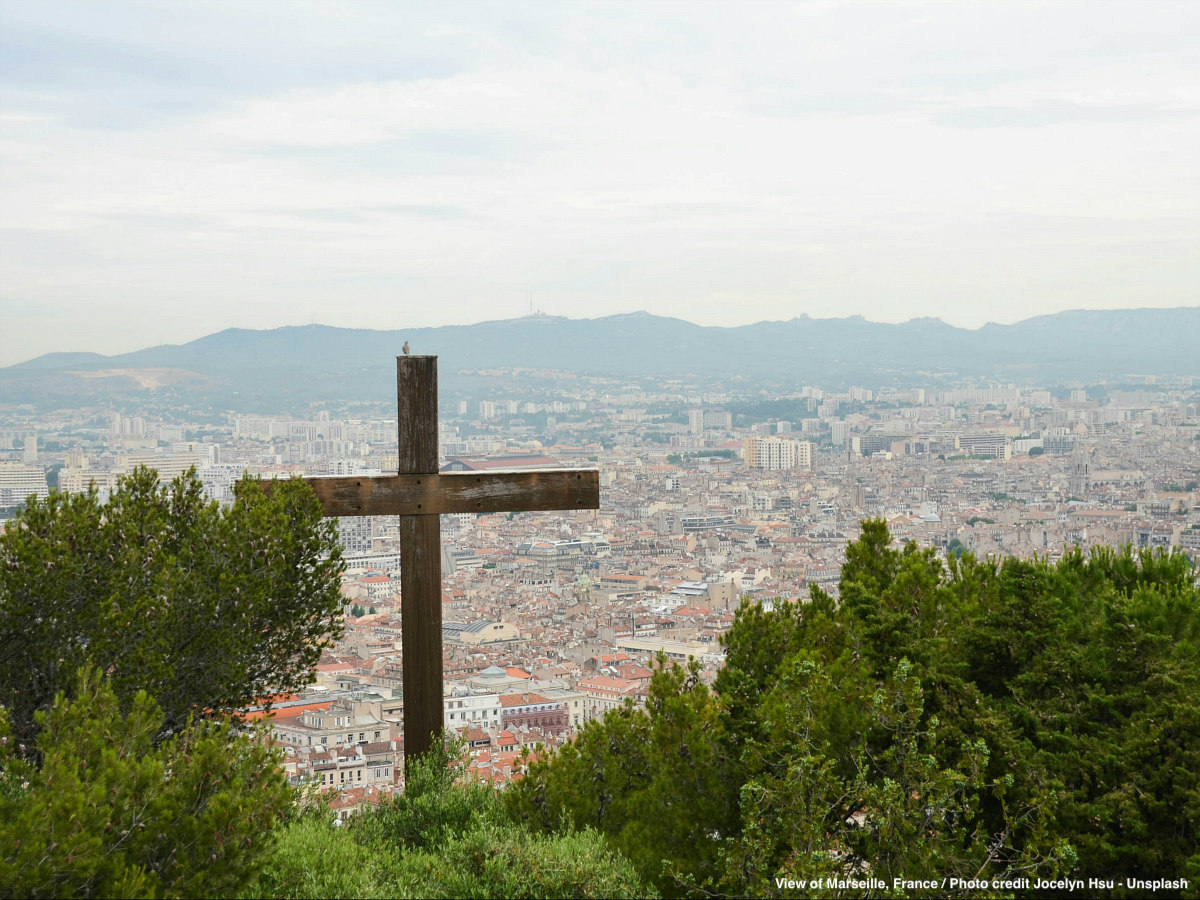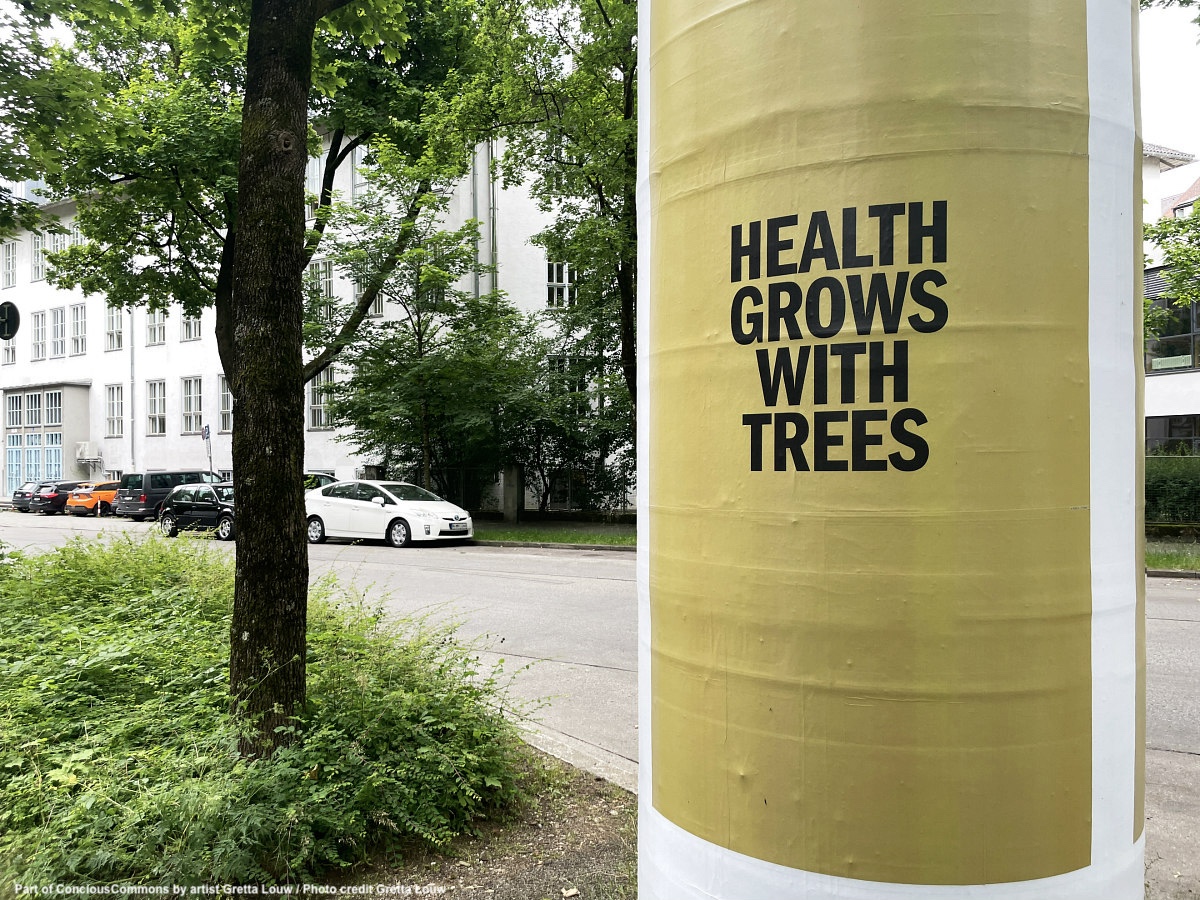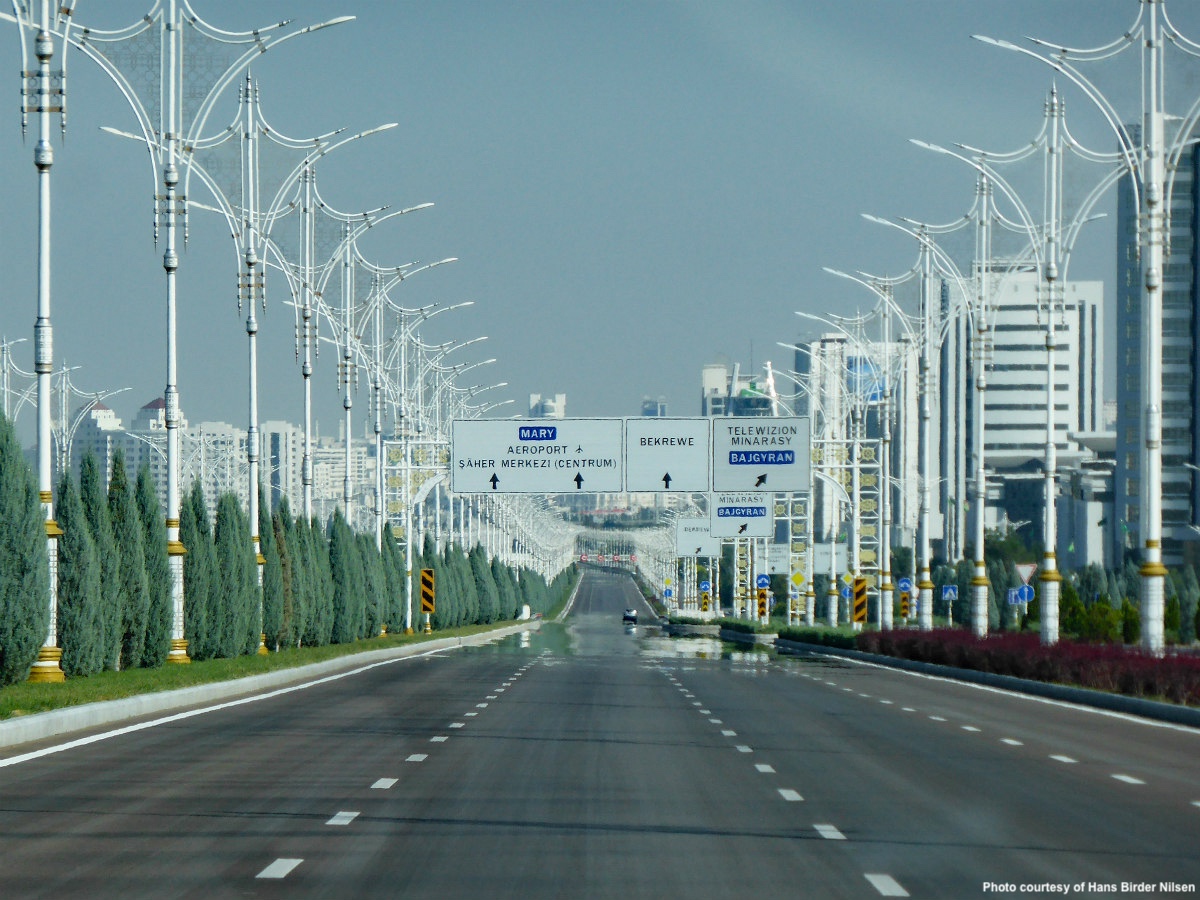Once the kiosk’s light is on, someone always comes by. “Great, there’s something going on again,” people say cheerfully. Many take a closer look, some stop, others dare to ask: “What are you doing here?”, “Will the kiosk open again?”, “A coffee would be fine”, “Can I get a ticket?” In Hasenbergl, a neighborhood in the very north of Munich, the kiosk of this subway station has been closed for years. A construction fence had barricaded the kiosk, the place to linger over a cappuccino was long gone. The competition of a supermarket above the ground and an expensive rent put the kiosk out of business for many years. Until last September. Now life is back in the mezzanine of the subway.
The kiosk has reopened under the name ‘Wunschkiosk’ (translated ‘The Kiosk of our Choice’). Its sliding windows and former newspaper displays engage people in conversations and invite residents to have an exchange. The kiosk is part of the initiative ‘Kunst Kioske’ (‘Art Kiosks’ in English) that runs temporarily from September to December 2023. It is funded by The Cultural Department of the City of Munich and the Competence Team Cultural and Creative Industries, SWM (Munich’s municipal utilities company, which operates the Munich subway), Verbindungslinien (BBK Bayern) and six Munich District Councils.
Beginning of this year, Platform Munich, together with BBK Munich and Upper Bavaria, jointly developed the idea of using these in-between urban spaces to bring life back to the dark and abandoned mezzanines of the subway. They made a call to artists who could put to good use the kiosks’ privileged locations to reach a broad audience of passers-by and commutters outside the gallery and museum spaces. The response was overwhelming (over 200 applications) and exposed the lack of affordable spaces for artists in Munich whose art and creativity don’t focus on consumption and profit maximization.

In April a jury selected a total of fifteen artists and collectives, whose artistic projects have filled the gaps left by the closure of the former kiosks – breaking and commenting on daily routines of mobility and making art visible and accessible to everyone. In the ‘Kunst Kioske’ team’s words, “The exhibited works, some of which have been developed in a site-specific manner, are as diverse as their designers, with medium and style changing from kiosk to kiosk. From time to time, the artists will be on site and are very much looking forward to a conversation with passers-by and interested parties.”
Before the official opening of ‘Kunst Kioske’, Anna Lena von Helldorff and Susanne Beck’s project ‘Kiosk Stories’ experimented in two subway kiosks, Schwanthalerhöhe and Petuelring. The artists were on site, invited guests, asked for the aesthetic qualities of the subway and listened to passers-by.
Artist, Peter Kees has opened the ‘Embassy of Arcadia’ that grants asylum and visa for people to access a utopian place of the same name. The kiosk of artist Martin Schmidt reminds of a flower shop that symbolically becomes a mausoleum of the “living” in the public urban space. The withering and decay of the flowers is part of a process that continues until the kiosk becomes an empty, indefinite space. The kiosk with a swimming pool by Regina Baierl in the Michaelibad subway station immerses observers into a summery, nostalgic, secure world. Intrigued by the lights, people in Emmanuel Mooner’s kiosk come closer to satisfy their curiosity just to be rejected: “Only for regular customers.” There is also a particular post office designed by Louisa Abdelkader. Artists Jovana Banović, Michael von Brentano, Paula Leal Olloqui, Alexander Steig, Janina Totzauer/Sebastian Quast use the kiosks as displays for their artistic work while others see the kiosks as stages. Ute Heim, Stephanie Müller/Klaus Erika Dietl together with Mikio Saito perform passages of commuting routines and everyday life.
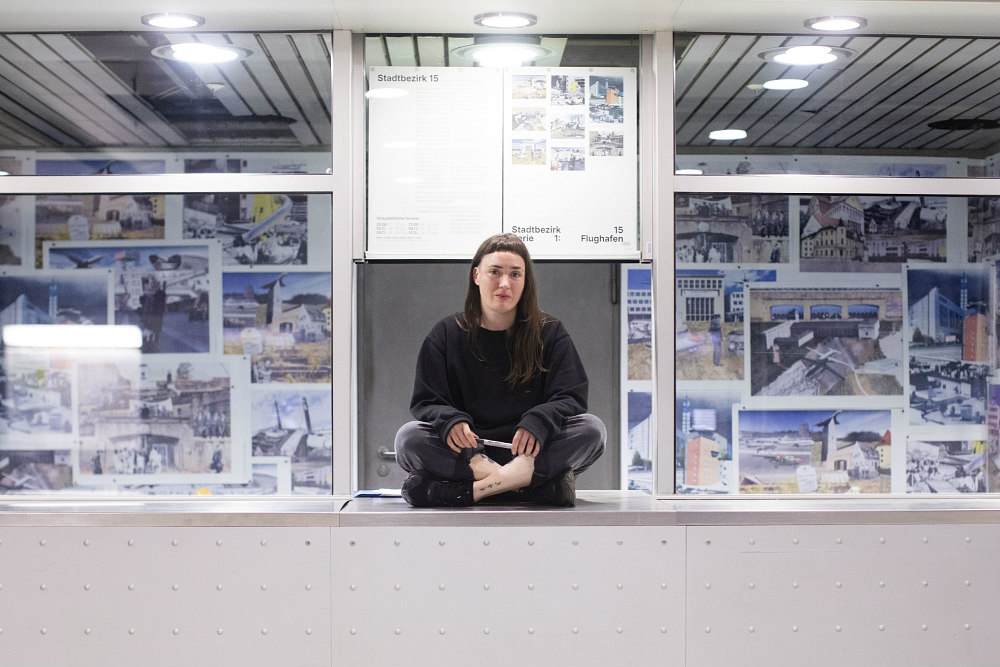
People have been taking the Munich City subway since it was built in the run-up to the 1972 Summer Olympics. Going by subway became a daily life routine for hundreds of thousands of people – buying tobacco, tickets, and flowers or having a coffee and talking to people in and around the kiosk. Kiosks in the mezzanine shaped the local culture while the creation of such an infrastructure system focused on the city as a whole. Public transport started changing how people move in urban space and experience distances and places. The subway made it possible to live in the more affordable areas of Munich and work in other parts of the city. “Munich is becoming more modern” read the boards that Munich’s municipal subway department displayed in the numerous construction sites in 1965 across the city.
Since then, the city’s population has grown to 1.5 million people and every day many continue to go through the stamping machines of the subway. In the meantime, most of the kiosks in the subway’s mezzanine have been closed. But I wondered why? What are the reasons? Has the need to talk or to be greeted with a smile by a stranger in the early morning vanished altogether? That seems unlikely when I heard stories of the disappointment of kiosk’ owners and long-time customers alike who treasured the life around these places in the subway and lost it. Urban conditions and policies such as fire protection regulations changed. Also rent increases submitted to the pressure of economic considerations rather than to the social capital of the kiosks.
The real estate industry and city developers have views for the city on their own. According to the ‘City of Tomorrow’ platform, a project of the real estate developer GBI, KfW Bank and the management consultancy PWC, “Creativity, innovation and prosperity are concentrated in cities. In the global competition between locations, cities are the centers of science and industry in Germany. Cultural, social and economic progression can be found here. As society changes, so do cities. And just as cities change, so does urban society.” And the report continues reading “What is happening in the cities points to the future. Urban development strategies and concepts not only initiate urban transformation processes, but also make statements about how people want to live in their city of tomorrow.”
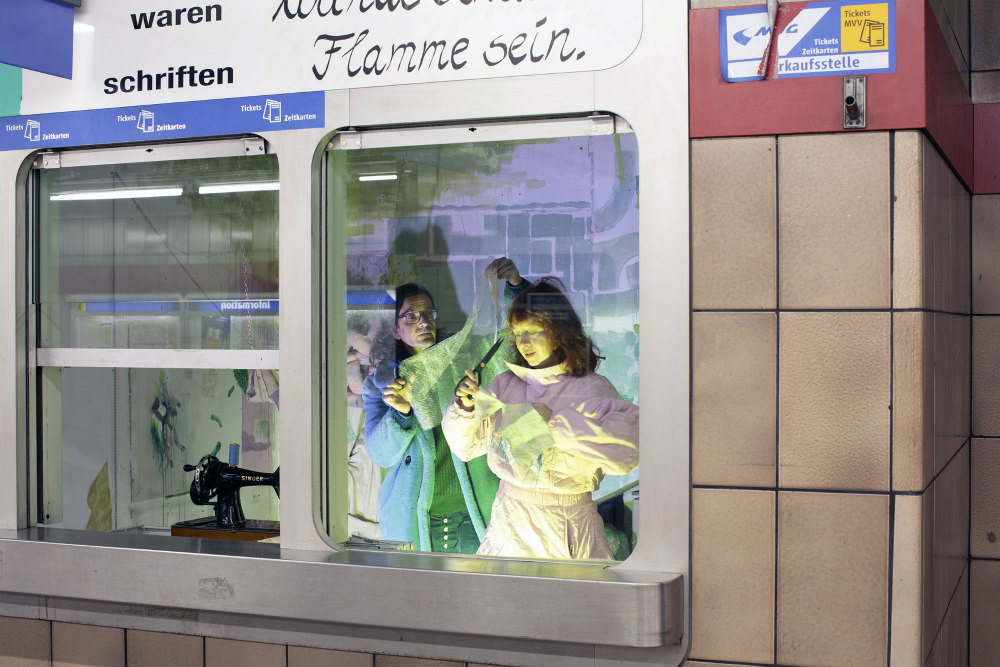
However, transformation processes, such as those outlined in that report, are usually agreed in central spatial locations by urban futurology. Also, politics and businesses all too often focus their discourse on the middle-class and a wealthy upper class when discussing relevant topics and needs. This narrow perspective relegates people with apparently less social, cultural and/or economic capital and/or an additional migration background to be perceived as unequal – even though they are essential parts of society.
When my partner, the artist Christian Weiß, and I, as a cultural anthropologist took over the kiosk in Hasenbergl and implemented the ‘The Kiosk of our Choice’, we wanted to create a permeable space for residents’ views and opinions. At the intersection of art and critical urban research, this kiosk intends to make inequality visible and ask residents about “the city of tomorrow,” 60 years after the city came up with this concept for Hasenbergl. Back in the 1960s, Hasenbergl was planned as part of a vision for the future city, however this area and its residents have been rarely involved in discussions about creativity, innovation or prosperity.
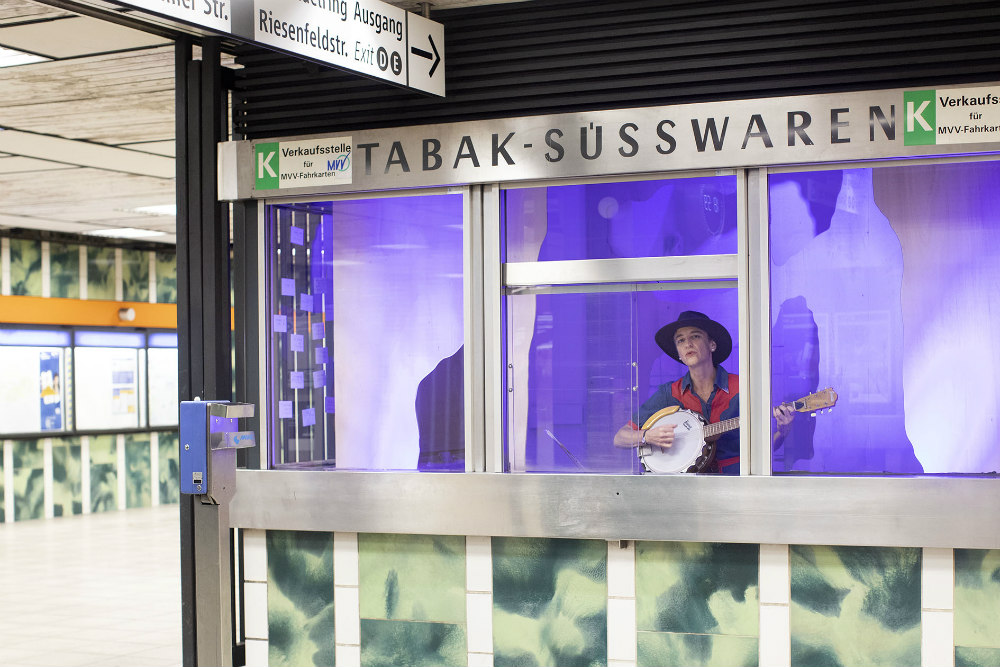
Paradoxically, even though the subway was also meant for the future, many of its kiosks are now empty and life around them is gone. While the subway network has successfully united the city as a whole and each neighborhood is connected to one another, residents close to their entrances are excluded from participating in the development of the city, and ultimately in urban society. Platform Munich acknowledged the symbolism of these empty spaces and filled them with art.
Our research kiosk tries to involve people who often have no voice when it comes to the future of their city. We search for the qualities of an area which, in my current understanding, is neither the spot of future mobility entrepreneurs nor of the urban art scene. We reflect on the question of why no one in the “district of the future” asks about the future anymore. Well, because – as geographer Edward Soja writes – there are incredible challenges anyway: the social gap is widening under extremely changing economic conditions, as he predicted for the “Postmetropolis” – his own way to call the city in late modern times. Another of his six dimensions deals with the city as a “Cosmopolis” – that is what it always has been – and ongoing movements of migration and mobility.
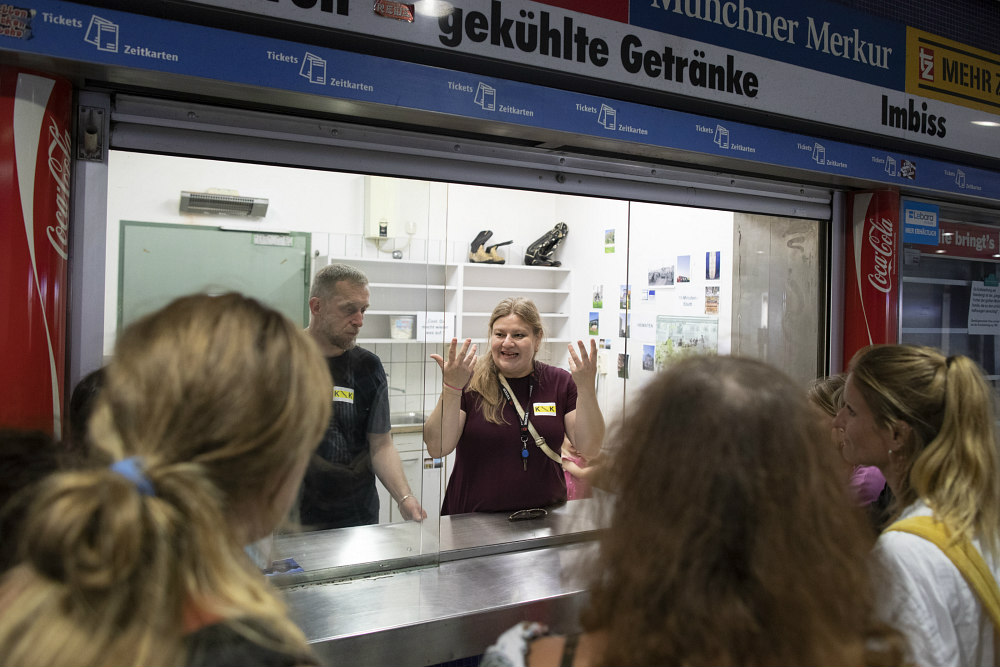
In his book, published in 2000, Soja described a more and more fragmented urban landscape. In contrast to these developments, fundamental challenges like the achievement of climate targets and social peace as well as the preservation of democracy are, among other things, to be seen as challenges for society as a whole – for which correspondingly complex solutions must be found. And this applies not only, but especially to cities and their inhabitants.
The kiosks could be places that bring people together even today. Art and business must also move towards each other. By filling the vacuum left with the closure of these urban spaces, ‘Kunst Kioske’ touches on this important topic: the city’s art scene and economy can no longer act as separated fields in postmodern times. In the last ten years, every kind of art or creative industry in Munich has been evaluated primarily based on whether it can generate a profit. Unfortunately, the debate was hardly about meaning anymore.
Bringing art into the public space is particularly important for a city like Munich in which almost everything is geared towards capitalist exploitation. Instead, art must be rather understood as a medium of exchange and reflection that stimulates discussion and ideally supports a democratic urban society – by shifting the gaze, asking questions, abstracting the everyday life and much more. When local artists deal with the city’s infrastructure, and life around the subway, something new can emerge from it. This can directly touch or at least irritate people’s mindset to open their eyes to the many challenges their city is facing.
